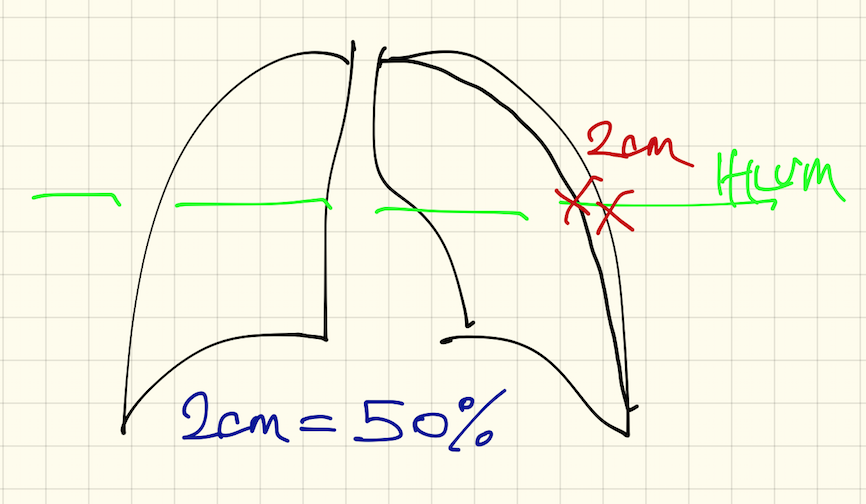Can you easily calculate the size of a pneumothorax? Does the size matter?
 Calculating the size has been difficult, as it requires formulas we don’t necessarily carry around in our heads; like the figure on the left. In most cases we approximate and say it’s about such and such a percent. I know in many cases I’ve said for example, it’s about 20% and an inpatient unit will argue its 30-35%. Don’t we need an easier way and does it matter?
Calculating the size has been difficult, as it requires formulas we don’t necessarily carry around in our heads; like the figure on the left. In most cases we approximate and say it’s about such and such a percent. I know in many cases I’ve said for example, it’s about 20% and an inpatient unit will argue its 30-35%. Don’t we need an easier way and does it matter?
In terms of management, the clinical evaluation is more important than the size of the collapse and we tend to find that patients with a secondary pneumothorax, have more severe symptoms than those with a primary cause.
If we concentrate on the Spontaneous pneumothorax for now, we tend to divide them into 3 groups based on size:
- <20%
- 20-50%
- >50%
The size may determine the treatment i.e. if < 20% we may do nothing, or simply give oxygen. If it’s >50% we will put in an intercostal catheter ( it may be a pigtail). However we will be guided by the patient’s symptoms and in many cases the size of the pneumothorax doesn’t correlate with the clinical presentation.
In terms of making it easy to calculate size, the British Thoracic Society (MacDuff et al Thorax 2010) has come up with a simple solution, for what is important. Which are the pneumothoraces that I will definitely need to intervene in? Remember 2cm. That’s it. If the pneumothorax is >2cm at the level of the hilum it is large, ie., >50%.
Below is a video Lecture by Dr Kalamanathan on Spontaneous Pneumothorax – size measurement and management











